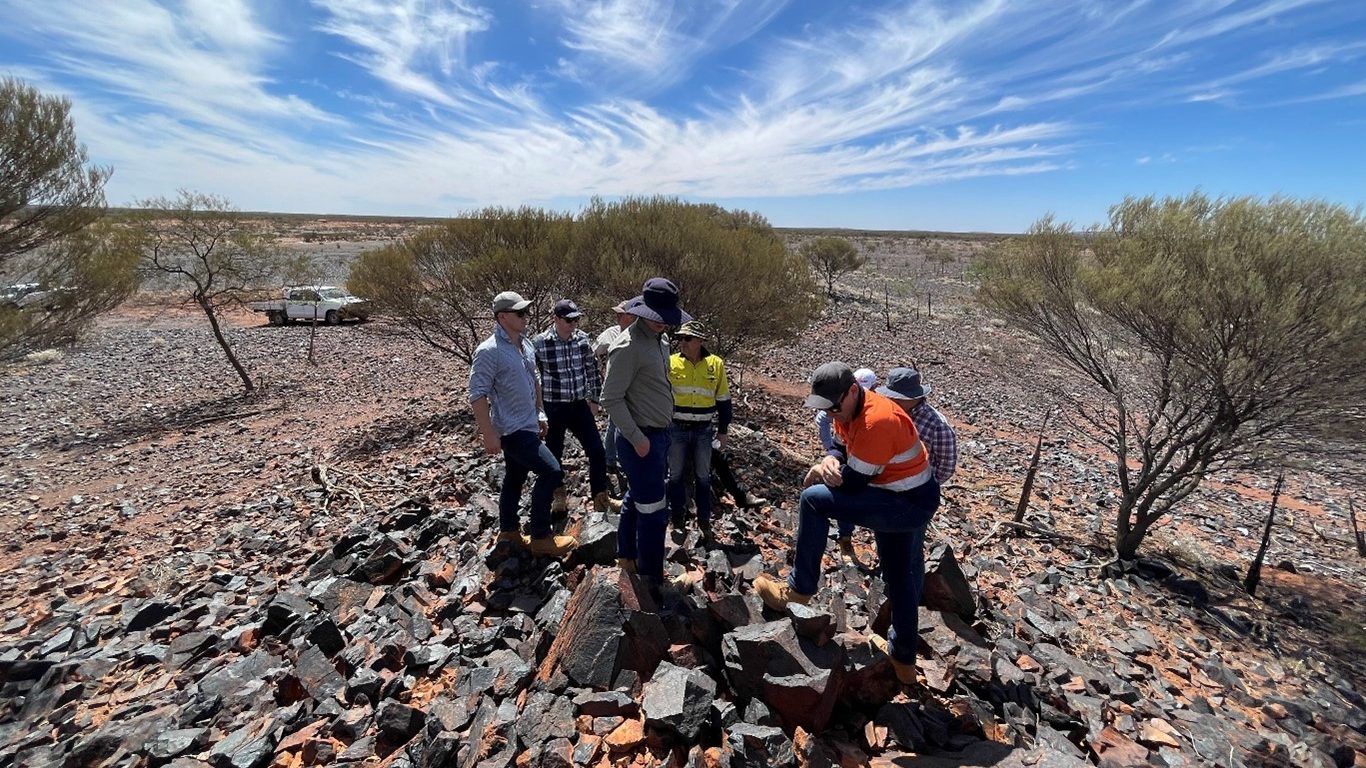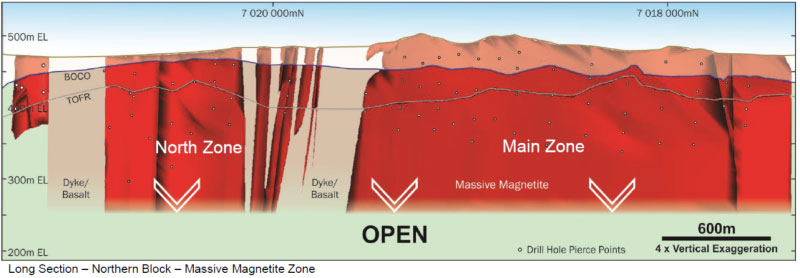The geology of Gabanintha and Yarrabubba is similar with mineralisation hosted in a layered gabbro and occurring in a series of massive to disseminated Fe-V-Ti bands. These bands or layers range in thickness from a few metres up to 20–30m.
The highest grades are contained within the 15-25m thick massive magnetite unit where grades average 48% Fe, 1.1% V2O5 and 12% TiO2. The mineralised gabbro generally outcrops as low ironstone ridges within the project area.
The simple geology and outcropping orebody makes it ideal for open pit mining.

A typical cross-section through the deposits is shown below. This section through Yarrabubba displays the various layers including the high-grade “massive” magnetite unit in red which is overlain by a series of lower grade disseminated bands. A piece of drill core below shows the coarse grained nature of the massive magnetite layer.

The long section below shows an example of the shallow weathering profile over TMT’s resources. This section over the northern portion of the Gabanintha deposit shows the weathering profile varies with the base of complete oxidation (BOCO) and the top of fresh (TOFR) being shallower in the north (left hand side).

The weathering of the mineralised units has a direct impact on the recoveries of vanadium. The vanadium at Gabanintha and Yarrabubba is associated with magnetite which is magnetic, hence the first step in processing is magnetic separation. Oxidised magnetite is not magnetic and cannot be separated from the gangue minerals (silica, alumina) efficiently.
Areas where the transition and fresh zones are close to surface are obvious targets for initial production.